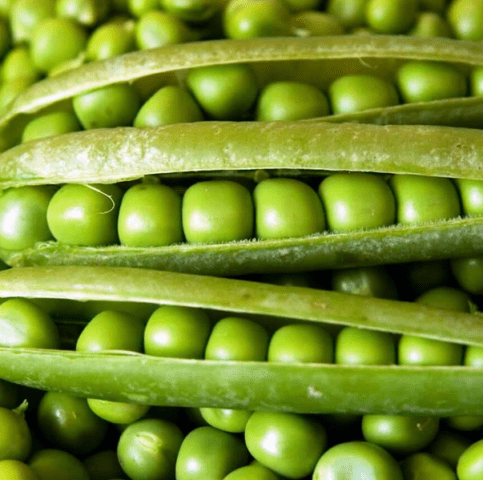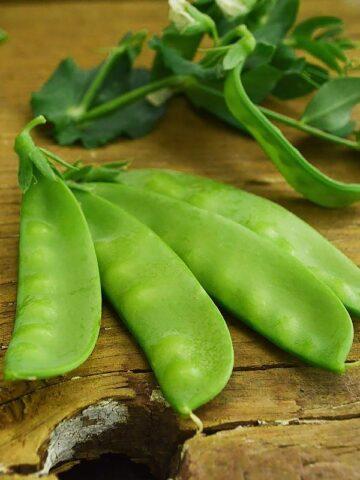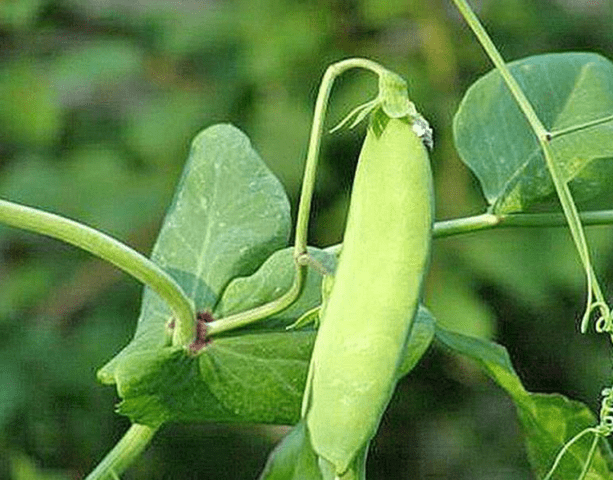Content
Planting peas at home is quite simple. The culture is unpretentious and grows all year round. It develops normally even at 10–12 degrees Celsius. You can use not only peas for food, but also greens, which are suitable for salads and soups.
Is it possible to grow peas at home on a windowsill?
You can grow peas at home because the plant is unpretentious. To do this, take an ordinary box of moderate depth and place it on the windowsill. You can take any soil, as long as it is light and moderately fertile.
Since peas love cool conditions and can easily withstand even relatively low temperatures (10–12 degrees), the room should be periodically ventilated. At the same time, you can grow peas on the balcony, as well as on the loggia. This is where you need to take the box out if the room is too hot.
There is no need to worry about the formation of ovaries - peas are self-pollinating crops. Therefore, growing it at home is quite simple. The pods form independently.
Another advantage is that peas can be grown on a windowsill in winter. This is a year-round crop that feels normal at different times of the year.
Pea varieties for growing at home in a pot
You can grow a variety of varieties of this plant at home. It is worth choosing them based on yield indicators and taste.
At home in a pot you can grow the following varieties of sugar peas:
- Ambrosia.
- Zhegalova 112.
- Sugar girlfriend.
- Sugar Oregon.
- Children's sugar.
- Inexhaustible 195.
In the apartment you can also grow shelling varieties of peas: Oscar, Adagumsky, Ranniy Gribovsky 11, Khavsky pearl, Vera, Voskhod.
The necessary conditions
Growing peas at home is not so difficult, but to get a good harvest you need to create minimal conditions:
- cool temperature (optimally in the range of 16–18 degrees);
- moderate hydration (no more than 2-3 times a week);
- regular feeding, but without nitrogen;
- sufficient lighting with light shading in the afternoon (a constant stream of sun in summer is unacceptable).
It is also important to remember that the soil is in a closed container. Moisture can stagnate, so it is necessary to make as many holes as possible in the bottom and lay out a drainage layer of small stones.

Peas are unpretentious, so they can be planted on the balcony
How to grow peas on a windowsill at home
Growing peas at home is not that difficult. The culture is unpretentious and requires minimal care.The most important thing is to monitor the temperature so that the plant does not get too hot. It is better to keep it with the window constantly open and even in drafts.
Preparing seeds for planting
Growing peas on a windowsill from seeds begins with their preparation. Seed material can be purchased at the store or collected independently at the end of summer. The shelf life of the seeds is two years - during this time they remain viable.
To grow productive peas at home, you need:
- Inspect the seeds and discard those that have damage, spots, rot, as well as peas of atypical size and shape.
- Immerse in a container of water (a little salt and a few drops of vinegar are dissolved in it) and remove those that float.
- Leave the remaining seeds for a day and rinse under running water, and then soak for half an hour in a 2% solution of potassium permanganate or fungicide. This is necessary in order to safely grow peas at home.
- The peas are washed again and dried at room temperature, laid out in one layer.
- Then soak overnight in Epin, Kornevin or another growth stimulant.
- Lay out on a thick, damp cloth (it is better not to use gauze) and cover with the same layer on top. Keep at room temperature for 5–6 days.
- Immediately after this, the peas are planted in the ground.
Selection of capacity
You can grow peas at home in a common container made of plastic, wood or other materials. There are no special requirements for the container, but it must be wide and shallow (up to 10–15 cm), since otherwise the soil may rot due to constant moisture.
To prepare the container, it must be thoroughly rinsed and, just in case, disinfected in a weak solution of potassium permanganate.If there are no drainage holes, they are made at the bottom using an awl and other tools. The first layer is filled with drainage - pebbles, expanded clay and other stones (2 cm high).

You can use a wooden box for growing
Soil preparation
Before sowing peas at home, you need to prepare the soil. You can buy it in a store or make it yourself. Peas prefer moderately fertile and light soil. Therefore, you can take the following option as a basis: garden soil, humus or compost, black peat, coarse sand (2:1:1:1).
Instead of sand, you can use coconut fiber or vermiculite. The soil is sterilized the day before in the oven (15 minutes, 150 degrees) or placed in the freezer for several days. Then it is poured into a box on a layer of stones, moistened, and allowed to lie for several days.
Landing technology
You can plant peas in a pot at home in early April according to the following instructions:
- Mark several grooves no more than 2 cm deep, maintaining an interval of 7–8 cm between them.
- Planting peas with their sprouts facing down makes it easier to grow them. The distance between adjacent seeds should be at least 5 cm.
- Cover with soil, but do not compact it.
- Spray with a spray bottle and cover the box with film or glass.
- Ventilate and water periodically.
- After a few days, shoots will appear - at this point the lid can be removed.
- Then continue to water, not allowing the surface layer to dry out completely.
- A week after germination, give the plants simple superphosphate (2 g per 1 l). This will allow you to grow healthy peas at home and get a normal harvest.
All this time, the plants are grown at room temperature.Before emergence, containers can be kept warm (23–25 degrees), and then grown in cooler conditions (16–18 degrees).
Caring for peas at home
To grow productive peas at home on a windowsill, it needs to be provided with regular watering. A prerequisite for the crop is the application of fertilizing.
Watering
If you need to grow healthy peas at home, it is worth remembering that the crop does not like abundant watering. At the first stage, it is enough to give water twice a week, and when flowers appear - 3 times. During hot periods, water every day, while the surface layer of soil should remain moderately moist. During this period, it is also important to irrigate the plantings in the late evening, after sunset.

When grown on a windowsill, peas need regular watering.
Top dressing
Regular fertilizing allows you to reap a good harvest:
- The first time the plants are fertilized before picking. Superphosphate is added in an amount of 2–3 g per 1 liter.
- On the eve of flowering, give the same composition, as well as potassium sulfate in the amount of 1 g per 1 liter.
- Two weeks later, the same fertilizing is applied (you can also purchase a special fertilizer for legumes).
- The last time they are fed is after another two weeks (with the same fertilizers).
Picking
To grow peas at home, you need to pick. Plants are planned to be replanted after they have their second true leaf. At this moment, they dive into individual pots (volume of at least 300 ml) or into a larger box. In this case, the interval between adjacent plantings should be at least 10–15 cm, and between rows - 20 cm.
In the first week after picking, it is better to keep the peas out of direct light - this can be done quite simply at home by covering the glass with paper or a light cloth. You also need to regularly ventilate the room, especially if the apartment is too warm.
Support
To grow peas at home, you need to provide for the installation of supports. They are placed at the moment when the seedlings reach a height of 12–15 cm.

As a support, it is enough to stick a strong stick into the soil, placing it next to the central shoot of the plant
Disease Control
If you grow a crop at home, the risk that it will suffer from pests or diseases is significantly reduced, although it cannot be completely eliminated. The plant can be affected by gray rot, bacteriosis, downy mildew, and rust. For prevention, you need to monitor the amount of watering, regularly loosen the soil and treat with fungicides:
- Bordeaux mixture;
- "HOM";
- "Skor";
- "Tattu";
- "Maxim" and others.
Of the pests, beetle larvae and aphids are especially dangerous. They are fought with folk remedies. At home, seedlings are sprayed with an infusion of house ash, chili peppers, onion peels, garlic, and tobacco dust. In extreme cases, insecticides are used (Aktara, Biotlin, Iskra, Fitoverm and others).
Possible problems during cultivation
Growing a culture at home is not so difficult, but since the conditions in the apartment are different from usual, some difficulties may arise:
- Due to the high air temperature, the lashes begin to dry out. Peas love cool weather, so you need to turn off the heating radiator and regularly ventilate the room. If necessary, take it out of the house to a balcony or loggia, and also increase watering.
- If pods do not set, reduce watering. The containers should also be moved to a sunny window.
- If the leaves darken and begin to dry, you need to apply fertilizer containing magnesium.
- If the pods turn out to be crooked and half-empty, it is necessary to feed them with potash.
Conclusion
It is better to plant peas at home in early April, when there is enough sunlight. The room should be kept cool, since even at 25–27 degrees the crop may stop developing. Otherwise, care is simple, so even a novice gardener can cope with cultivation.














